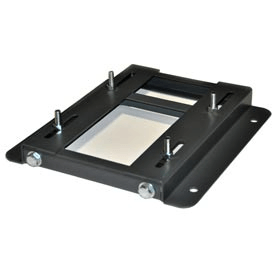Motor bases function as mounts for electrical motors. The devices are installed with adjustable bolt patterns ideal for different-sized motors that enable necessary position modifications to the motor. Many bases fit NEMA motor sizes.
The bottom regulates the pressure in a belt-driven system. This is critical for avoiding belt slippage and excessive strain that lead to higher maintenance costs and extra downtime. Optimal belt tension helps lengthen the support lifetime of components, such as belts and engine bearings.
Types
Today’s marketplace features multiple types of electric motor bases with two main categories, including:
Fixed-position adjustable bases: These adapt via manual alteration of the center distance that separates a driver and driven pulleys. They enable pushing or pulling a motor into spot to install or adapt the belt. After the belt is pulled over the pulley, one or multiple screws drive the motor away from the driven pulley before desired tension level is certainly attained. The mounting bolts are after that tightened to comprehensive the process.
Base style ranges from simple, one-piece, formed plates to more technical models featuring Z-bars with continuous welding to improve strength. Select versions correspond to NEMA mounting measurements. Fixed-position bases are preferred due to low initial costs.
The gear is further broken down into the following classifications:
Single-screw adjustable base possesses a central screw for tension positioning. As the screw turns, the motor movements with the pulley middle towards or away from the center of the powered pulley. The operational simplicity offered by this device offers a reasonably-priced option for several applications.
Dual-screw positioning base provides two adjustable screws placed beneath the motor feet. Its configuration matches single-screw systems but with reinforced structure for extending the Leaf Chain application form range. In comparison with the single-screw style, this kind of setup supports greater flexibility in shaft alignment and dual screws give a robust approach to maintaining alignment.
Specialized fixed-placement bases feature mounting studs extending from slots. While performing tension modifications the nuts are loosened and the engine can be lifted above the studs. If the nuts are loosened more than was required, the motor will change and shift nearer to the driven pulley during the tightening process. Because of this the strain will exceed the mandatory level and the mounting studs will experience excessive strain when tightening the nuts.
Tension-controlling bases: The structures integrate internal or external tools that automatically alter the center distance of a pulley of a running electric motor in response to load condition requirements.
Types of tension-controlling devices comprise:
Pivot bases depend on a motor’s weight along with its path of rotation for applying and controlling tension. The motor is mounted on pivoting arms and is held in place with bolt holes and slot machines configured to  fit the frame. Any risk of strain in the belt raises with the distance of the motor from the pivoting shaft. Once began, the motor’s reaction torque extends the pulley’s center distance and builds pressure by directing the pivoted arm downward. The hands move upward to decrease the center distance as the operating load increases.
fit the frame. Any risk of strain in the belt raises with the distance of the motor from the pivoting shaft. Once began, the motor’s reaction torque extends the pulley’s center distance and builds pressure by directing the pivoted arm downward. The hands move upward to decrease the center distance as the operating load increases.
Spring-loading bases utilize built-in springs to control belt strain. This device features a motor positioned on cross members connected to tubes. The produced carriage shifts towards or away from a powered member in response to fluctuating load. The motor is definitely bolted to the free-moving carriage. When the adjustment screw is usually turned clockwise, the follower nut, springtime, and carriage move in the direction opposing to the driven pulley. After setting up the belt, additional rotation of the screw pushes the carriage to a spot where the belt is snug.
Conversion motor bases match newer, smaller motors after they have undergone rerating to support older mounts.
Durable and custom-built bases serve specific purposes and applications. Heavy-duty versions comprise reinforced construction and heavier components to take care of additional stress. Unique gussets along with cross braces are occasionally used in these units.
Selection
Fixed-position mechanisms are selected because of their cost advantage over more costly tension-controlling equipment. They can be purchased in designs that are regular to NEMA mounting sizes and provide adequate belt tension control. However, such configurations have specific drawbacks, including:
Without a movable plate for mounting, system alignment is conducted when it is not really operating. This entails a particular amount of guesswork and is certainly less optimal than making changes in dynamic mode.
When the electric motor is secured in position and the belt aligned, pulley center distance is locked in. If belt tension isn’t adequate to drive a maximum load without slippage, stress can result in extra wear of elements.
Such structures face difficulty in coping with load fluctuations and shock or vibrations.
Tension-controlling bases are more efficient to install and operate. They cope better with circumstances involving variation in weight. These units hold the benefit in scenarios where many alterations are needed due to area and environment, or where unique mounting requirements exist. They decrease the time to perform changes and can attach motors vertically or horizontally.
If you want to know more about the motor base, please contact us for more information.